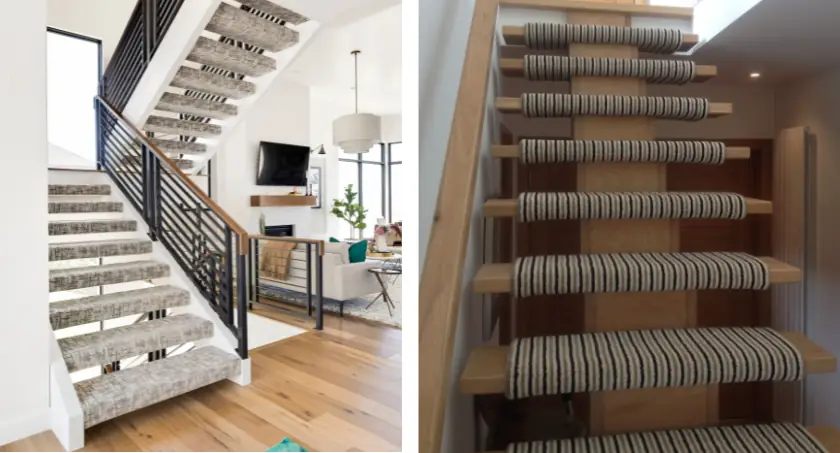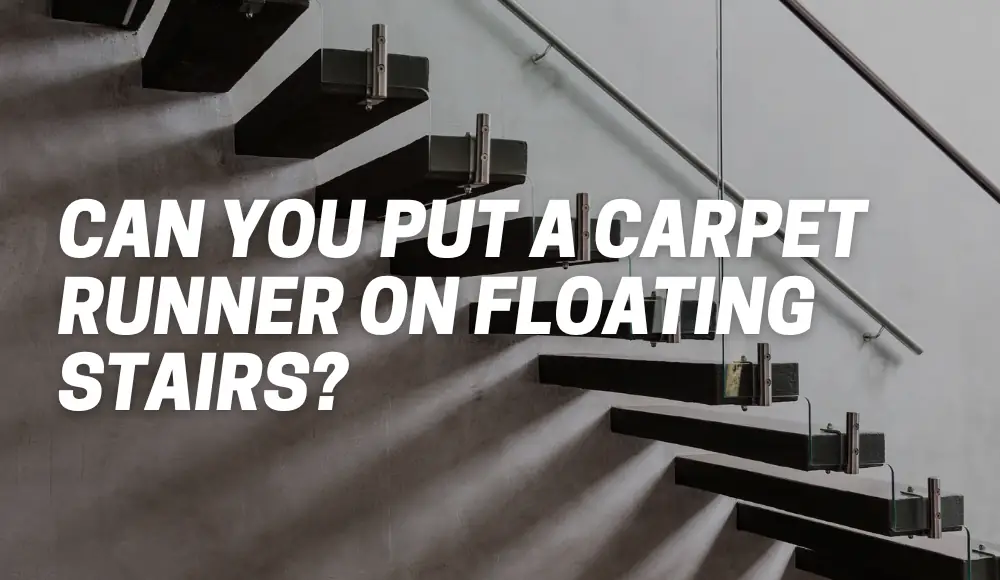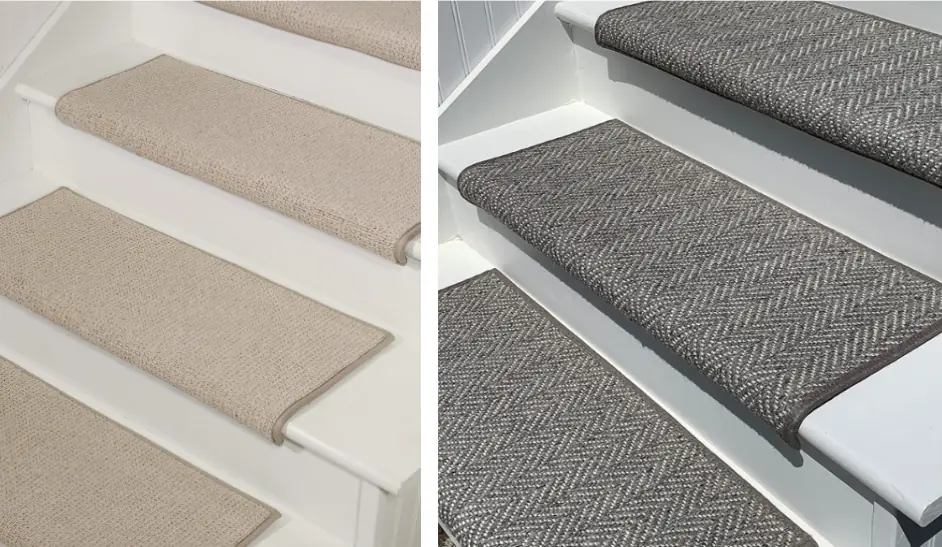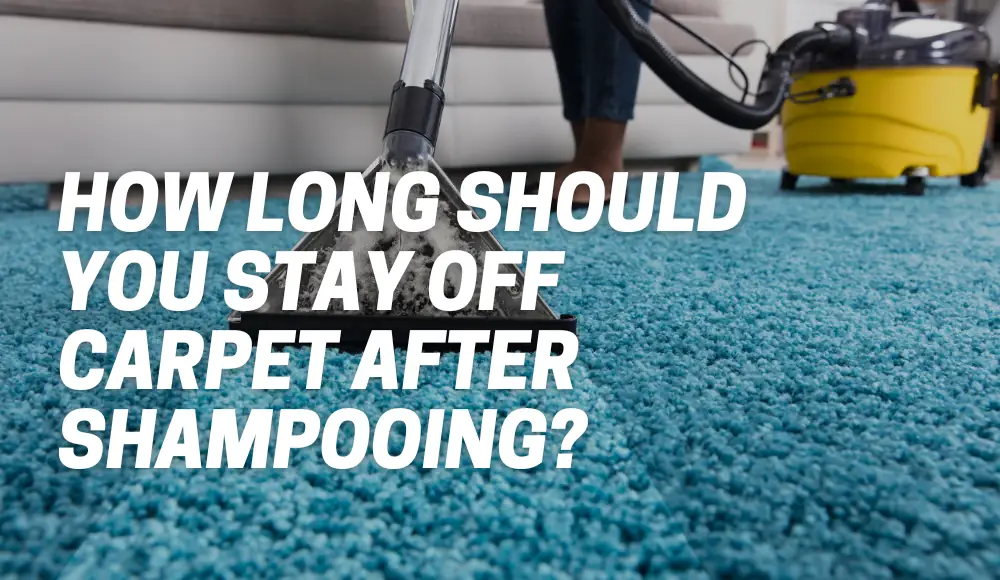Floating stairs have become increasingly popular in modern homes due to their sleek and stylish appearance. But if you have floating stairs in your home, you might be wondering if it’s possible to add a carpet runner on floating stairs to enhance both the aesthetic and safety of your stairs.
In this article, we’ll delve into the world of carpeting for floating stairs and provide you with all the information you need to make an informed decision.
Understanding Floating Stairs
When designing a home, there are numerous stair options available to homeowners. One of the most popular designs right now is floating stairs.
What makes them so unique is that they don’t have visible support underneath each step like traditional stairs do. Instead, they rely on engineering and design to stay in place.
Definition and Explanation of Floating Stairs
Floating stairs are also known as cantilevered stairs or suspended stairs. The treads (steps) are anchored to the wall with hidden steel brackets or stringers while the risers (vertical part between each step) are left open and unconnected to any other structure.
This gives floating stairs a clean, modern look that can complement any contemporary home design.
Benefits and Drawbacks of Using Floating Stairs in Home Design
One of the greatest benefits of using floating stairs in your home design is how they make your space look larger because they take up less visual space than traditional staircases.
They also provide more natural light into the space since light can pass through them easily. However, one major drawback is cost – because floating stairs require specialized engineering and installation, they tend to be more expensive than traditional designs.
Another drawback is safety concerns – without a solid wall or railings on both sides, people might feel nervous walking up or down these steps, especially if they’re carrying heavy objects.
Overall, if you’re considering installing floating stairs in your home, it’s important to keep these pros and cons in mind and be willing to invest in quality materials and professional installation for maximum safety and effectiveness.
How Do You Make Floating Stairs Safe?
Before we dive into the specifics of adding a carpet runner to floating stairs, let’s first address the issue of safety.
While floating stairs can be visually stunning, they can also pose a potential safety hazard, especially if the surface is slippery.
To make floating stairs safe, there are a few measures you can take.
- Anti-Slip Treatments: Applying an anti-slip treatment to the stair treads of your floating stairs can significantly enhance safety. These treatments create a textured surface that improves traction, reducing the risk of slips and falls.
- Handrails and Balustrades: Installing sturdy handrails and balustrades along your floating stairs provides added support and stability, making them safer to use.
- Proper Lighting: Adequate lighting is essential to ensure visibility on the stairs, especially at night. Install well-placed light fixtures or incorporate ambient lighting to illuminate the path and prevent accidents.
By implementing these safety measures, you can create a secure environment on your floating stairs.
Can You Put Carpet on Floating Stairs?
First things first.
Yes, you can definitely put a carpet on floating stairs. In fact, carpet wrapped stairs not only enhance safety but also add warmth, comfort, and visual appeal to your staircase.
By installing a carpet runner, you can provide an extra layer of traction on each step, reducing the risk of slipping and adding stability.
Furthermore, the carpet runner acts as a noise buffer, reducing the sound of footsteps on the stairs and creating a quieter atmosphere in your home.

Can You Use a Regular Carpet Runner on Floating Stairs?
While you can use a regular carpet runner on floating stairs, it’s essential to consider a few factors to ensure a proper fit and functionality.
- Size and Shape: Floating stairs often have unique shapes and dimensions. Therefore, it’s crucial to measure your stairs accurately before purchasing a carpet runner. Custom-made carpet runners can be tailored to fit your specific staircase, ensuring a seamless and secure installation.
- Durability and Grip: Opt for a carpet runner designed for high-traffic areas. Look for materials that are durable and have good grip properties to withstand the constant foot traffic on your stairs.
- Secure Installation: Proper installation is crucial for the longevity and safety of your carpet runner. Consider hiring a professional carpet installer who has experience with floating stairs to ensure a secure and flawless installation.
By taking these factors into account, you can choose a suitable carpet runner that fits your floating stairs perfectly.
How Much Does It Cost to Carpet Floating Stairs?
The cost of carpeting floating stairs can vary depending on several factors, including the size of your stairs, the type of carpet material, and whether you opt for a custom-made runner.
On average, you can expect to spend between $500 and $1,500 for carpeting a set of floating stairs or on average $15 to $35 per step.
It’s important to note that this estimate covers the cost of materials and installation. If you decide to hire a professional carpet installer, their fees will be included in the overall cost.
How Do You Measure Carpet for Floating Stairs?
Accurate measurements are crucial when it comes to carpeting your floating stairs. Follow these steps to measure your stairs for a carpet runner:
- Measure the Treads: Measure the width and length of each individual tread. Take into account any curves or irregularities in the shape.
- Measure the Risers: Measure the height and width of each riser. Ensure that the measurements are consistent for each step.
- Calculate the Total Length: Add the lengths of all the treads together to determine the total length of the carpet runner required for your floating stairs.
By measuring your stairs meticulously, you can avoid any unnecessary expenses or complications during the carpet installation process.
Installing a Carpet Runner on Floating Stairs
Challenges that come with installing a carpet runner on floating stairs
The installation of a carpet runner on floating stairs comes with its own set of challenges. Due to the unique design of the floating stairs, it is important to ensure that the runner is securely fastened and doesn’t slip or slide off.
The lack of support under each step can make it harder to attach and secure the runner, especially if you don’t have previous experience.
Additionally, uneven steps or treads can also pose a challenge when trying to install carpet runners.
Tips for proper installation
To properly install a carpet runner on your floating stairs, there are several tips you should follow:
- Make sure that each step has an even width and height
- Choose a high-quality runner material that is durable and easy to clean
- Use double-sided tape or adhesive strips to secure the runner in place
- Begin by securing the top section of your runner and work down one step at a time
- Use stair rods at each end for added support
- Ensure there are no bumps or creases in the rug that could cause tripping hazards
By following these tips, you can help ensure that your carpet runner stays securely in place and looks great for years to come.
Importance of hiring a professional to ensure safety
While DIY installation may seem appealing, it’s important to note that installing a carpet runner on floating stairs can be dangerous.
Without proper knowledge, tools, and experience, it’s possible to damage your staircase or harm yourself during installation. Therefore, it is highly recommended that you hire an experienced professional who has done this type of work before.
A professional installer will have all the necessary tools needed for proper installation while ensuring safety throughout the process.
This way you can rest assured knowing that your carpet runner is installed correctly and safely.
How Do You Install Carpet on Floating Stairs
—
Best Carpet for Floating Stairs
Choosing the right carpet for stairs for your floating stairs is crucial for both aesthetics and functionality. Here are a few options to consider:
- Nylon: Nylon carpets are durable, resilient, and resistant to stains and wear. They are an excellent choice for high-traffic areas such as floating stairs.
- Wool: Wool carpets offer a luxurious feel and exceptional durability. They have natural stain resistance and are known for their ability to retain their appearance over time.
- Polyester: Polyester carpets are known for their softness and vibrant colors. While they may not be as durable as nylon or wool, they are an affordable option and offer excellent stain resistance.
When selecting the carpet for your floating stairs, consider the level of foot traffic, your budget, and your desired aesthetic to make an informed decision.
FAQs
How thick should carpet be for stairs?
When it comes to carpet thickness for stairs, it’s recommended to opt for a carpet with a pile height between ½ inch and ¾ inch. This thickness provides a good balance between comfort and stability, ensuring a safe and comfortable walking experience on your stairs.
Conclusion
Adding a carpet runner to your floating stairs can enhance both the safety and aesthetic appeal of your staircase.
By following the tips and guidelines outlined in this article, you can make an informed decision and create a comfortable and visually stunning staircase in your home.
So go ahead, explore the options, and transform your floating stairs into a beautiful focal point that reflects your personal style and ensures the well-being of your family.




